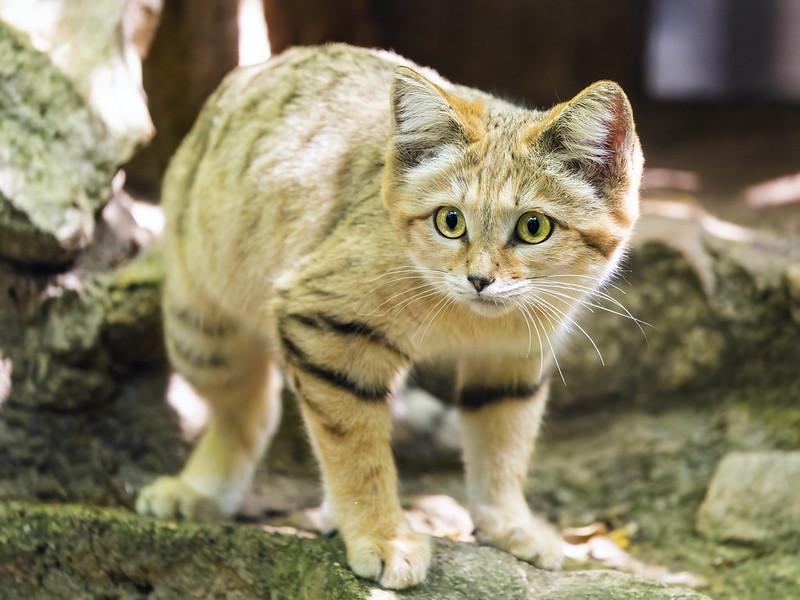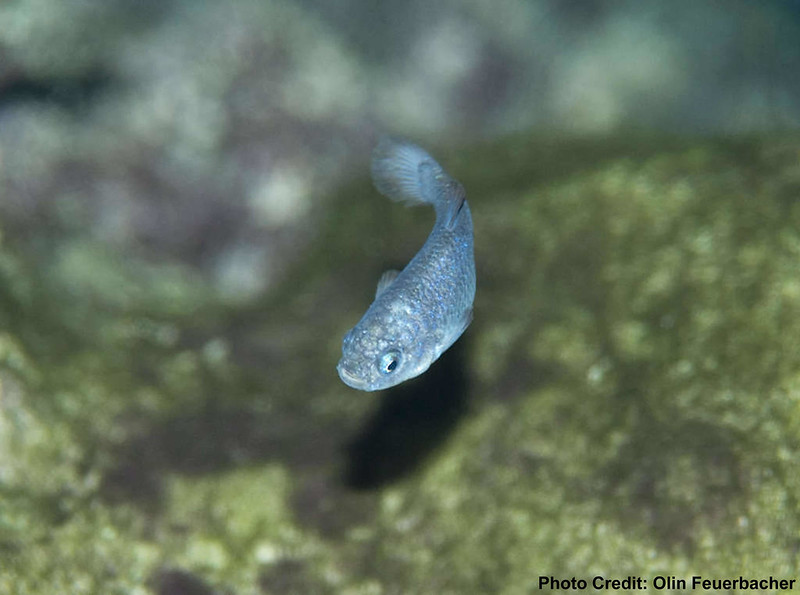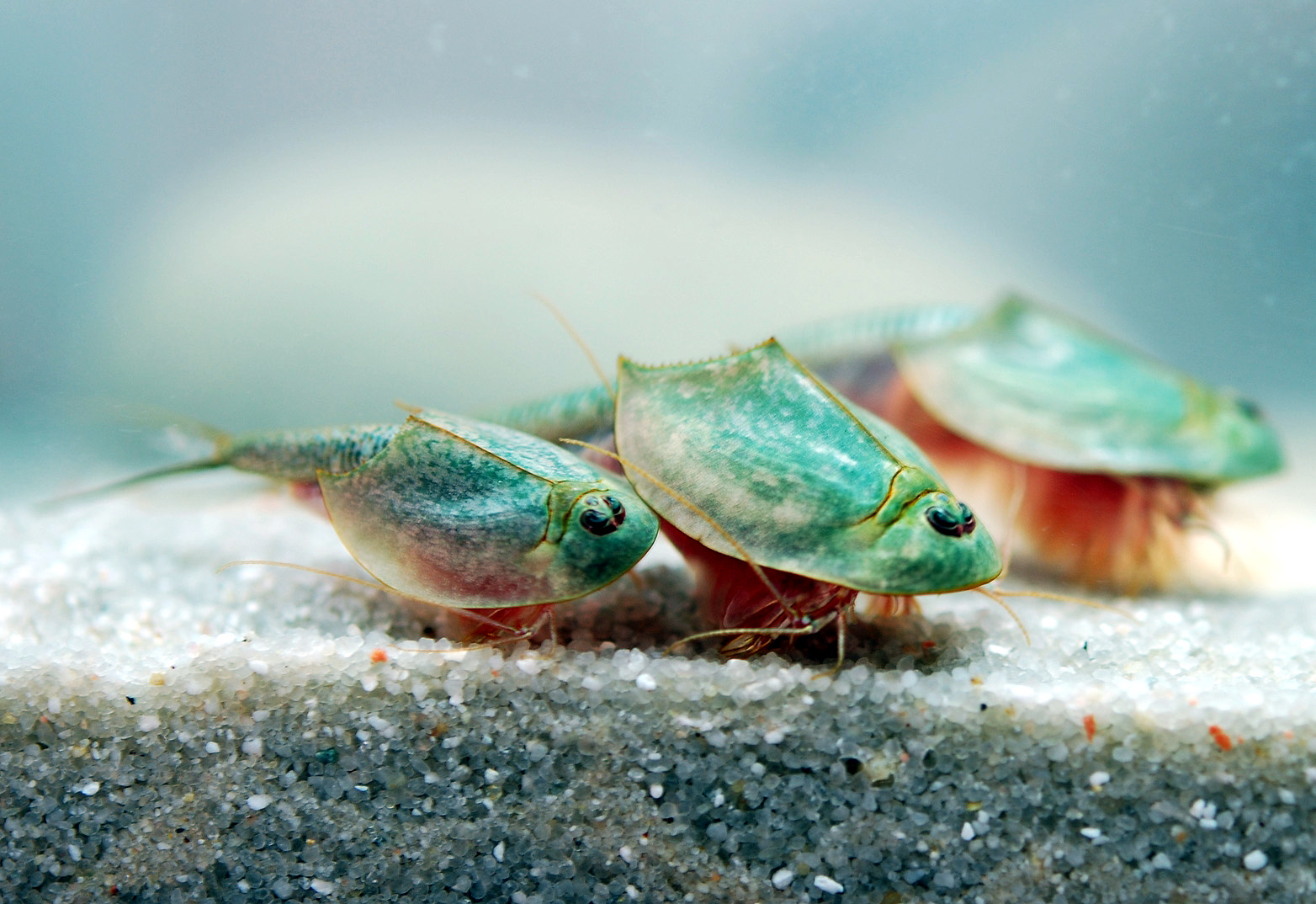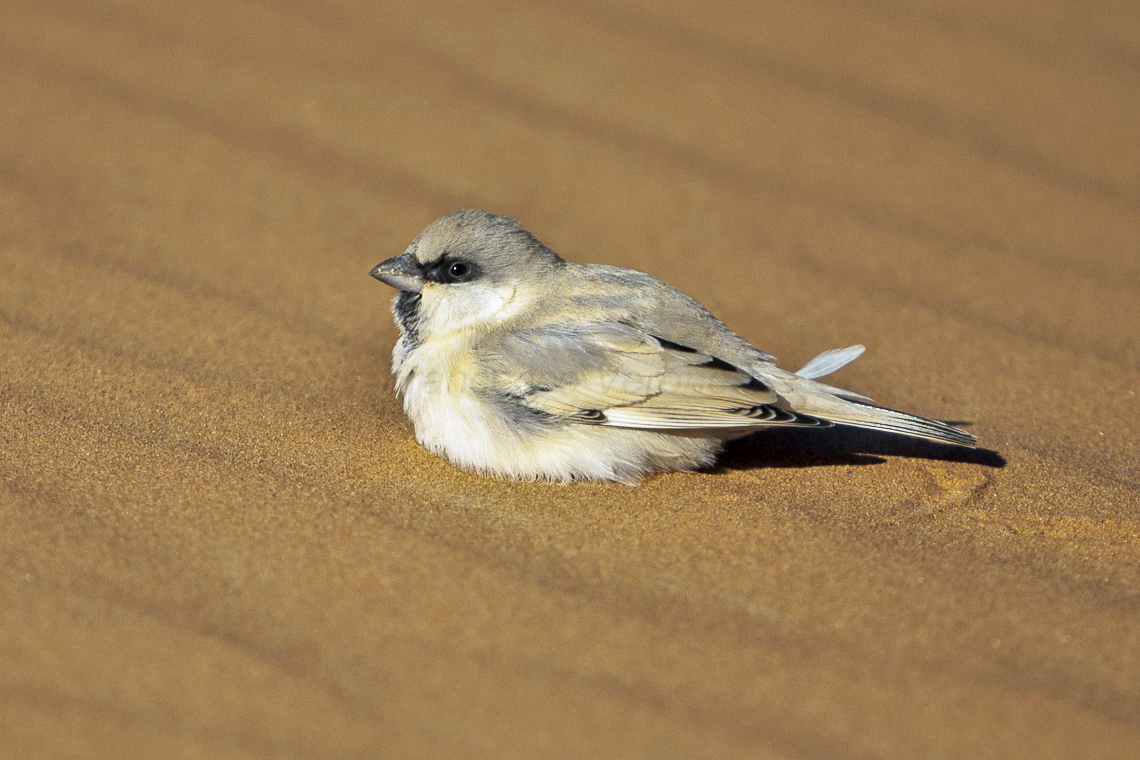The desert: on the face of it, not a particularly appealing place to live. For starters, it’s full of sand, which as we all know is coarse and rough and gets everywhere. Add to that a distinct lack of water and food sources, and you’ve got a recipe for seriously inhospitable surroundings. But some animals do call this arid world home – come with us on a journey to meet a few of these creatures of the sand.
Sand cat
We’ll begin with surely one of the cuddliest residents of the world’s deserts. The sand cat (Felis margarita) is a ridiculously cute little feline that lives a solitary life across the Sahara desert, the Arabian peninsula, and the dry regions of central Asia. Burrows in the sand protect them from the harsh sun, and when it’s cooler they emerge to hunt rodents, spiders, insects, and reptiles.

Look at the little face!
They can survive for weeks without drinking water, and have a particular proclivity for hunting snakes, even venomous ones – not bad for a little guy that has a maximum weight of about 3.5 kilograms (8 pounds).
Thorny devil
From the fluffy to the distinctly spiky: presenting the thorny devil (Moloch horridus). Making a home in the dry heat of the Australian desert requires some pretty nifty adaptations, and this guy is no exception.
In 2016, scientists figured out the clever way this lizard can soak up moisture through its skin. Channels between the lizard’s scales funnel any water it can pick up from dewy vegetation – or from moist sand during periods of more extreme drought – towards its mouth for it to gulp down periodically.
Another similarly spiny reptile, the Texas horned lizard, uses a comparable process to survive in the deserts of the southern US and northeastern Mexico.
And as if this weren’t enough fascinating features for one animal, the thorny devil also has a handy defensive strategy: a false head. When threatened, it camouflages its real head with spiky protrusions that look strikingly similar, hopefully keeping it safe to fight another day.
Devils Hole pupfish
There are few more ominous addresses on the planet than Death Valley National Park. With a name like that, not to mention its extreme temperature records, you’d be forgiven for thinking that no animals could thrive there. But there’s one fascinating – and extremely endangered – little fish that’s just about clinging on.

These shimmering fish have been considered endangered since 1967.
The Devils Hole pupfish (Cyprinodon diabolis) is found in only one place on Earth, the hospitable-sounding Devils Hole cave in Nevada. It’s one of the world’s rarest fish, with populations having dropped to only double figures at certain times in the past, but also one of the youngest.
Somehow, this little fish manages to get by in water that sits around an average of 34°C (93°F) all year round, with barely any food and super-low oxygen levels. They also have to deal with earthquakes churning up their watery home like a giant washing machine. Surely, one of nature’s great survivors.
Unfortunately, though, it’s not been an easy ride for the Devils Hole pupfish. High levels of inbreeding have threatened this isolated population, and human activity hasn’t helped either, but in recent years conservationists have been making every effort to keep them going.
Sidewinder
Back to the reptiles, and no list of desert dwellers would be complete without a nod to the sidewinder rattlesnake (Crotalus cerastes). While they are venomous, they don’t often come into contact with humans, but that doesn’t stop them from having a fearsome reputation for the speed with which they can shuffle across the sand.
Sidewinders get their name from this unique locomotive technique, which sees them slither sideways at speeds of up to 29 kilometers per hour (18 miles per hour).
A great way to get around on the shifting sand dunes of the Mohave and Sonoran deserts, for sure. But if we ever see one sliding towards us, we’re going to be running very fast in the opposite direction.
Dinosaur shrimp
We can’t leave out the arthropods, and so-called “dinosaur shrimp” (Triops) are some of the best examples of extremophiles around.

We can see where they got the nickname “dinosaur”.
They certainly look prehistoric, thanks to features inherited from their ancient ancestors, and one of their bizarre adaptations is their “third eye” – not a true eye, but a pit organ, a surprisingly common feature among insects that allows them to detect changes in light that could indicate the presence of a predator.
But honestly, for much of their lives they don’t have to worry too much about predation. Their eggs can remain dormant for months on end, happily chilling under the sands of arid deserts until the wet season comes and it’s time to hatch.
And this year, that period of wet weather happened to coincide with the end of the Burning Man festival, meaning that fleeing attendees had to wade through a sea of dinosaur shrimp-infested mud to get back to civilization.
Desert sparrow
We wanted to end with something cute and fuzzy, and there are loads of animals we could have chosen – meerkats, kangaroo rats, and the majestically eared fennec fox all come to mind. But birds have been conspicuously absent from this list thus far. So, a moment of silence please, for the desert sparrow.

This bird simply has no business being this cute.
The desert sparrow (Passer simplex) is a native of the Sahara desert. Aside from being hella photogenic, it has a beautiful song, which according to some of the Indigenous Berber peoples of the region is a sign of good fortune. In fact, these birds tend not to fear humans and can live in close proximity to them, and some Berbers intentionally leave nesting space for them in their buildings.
For many species, a desert environment would be the last place they would feel at home. But beyond their most famous inhabitants, our planet’s driest places play host to an incredible array of wildlife, and we’ve only just scratched the surface here. Amid the dust and sand, there are some truly amazing creatures to discover.
Curious about more? Join us for our first-ever free virtual festival of science, CURIOUS Live. Streaming online on October 21, 2023, we have a line-up of fascinating experts discussing all things Life, Death, and Creation (y’know, the small stuff) across three festival “stages”. Sign up now to find out more and secure your spot.
Source Link: Creatures Of The Sand: What Animals Live In The Desert?